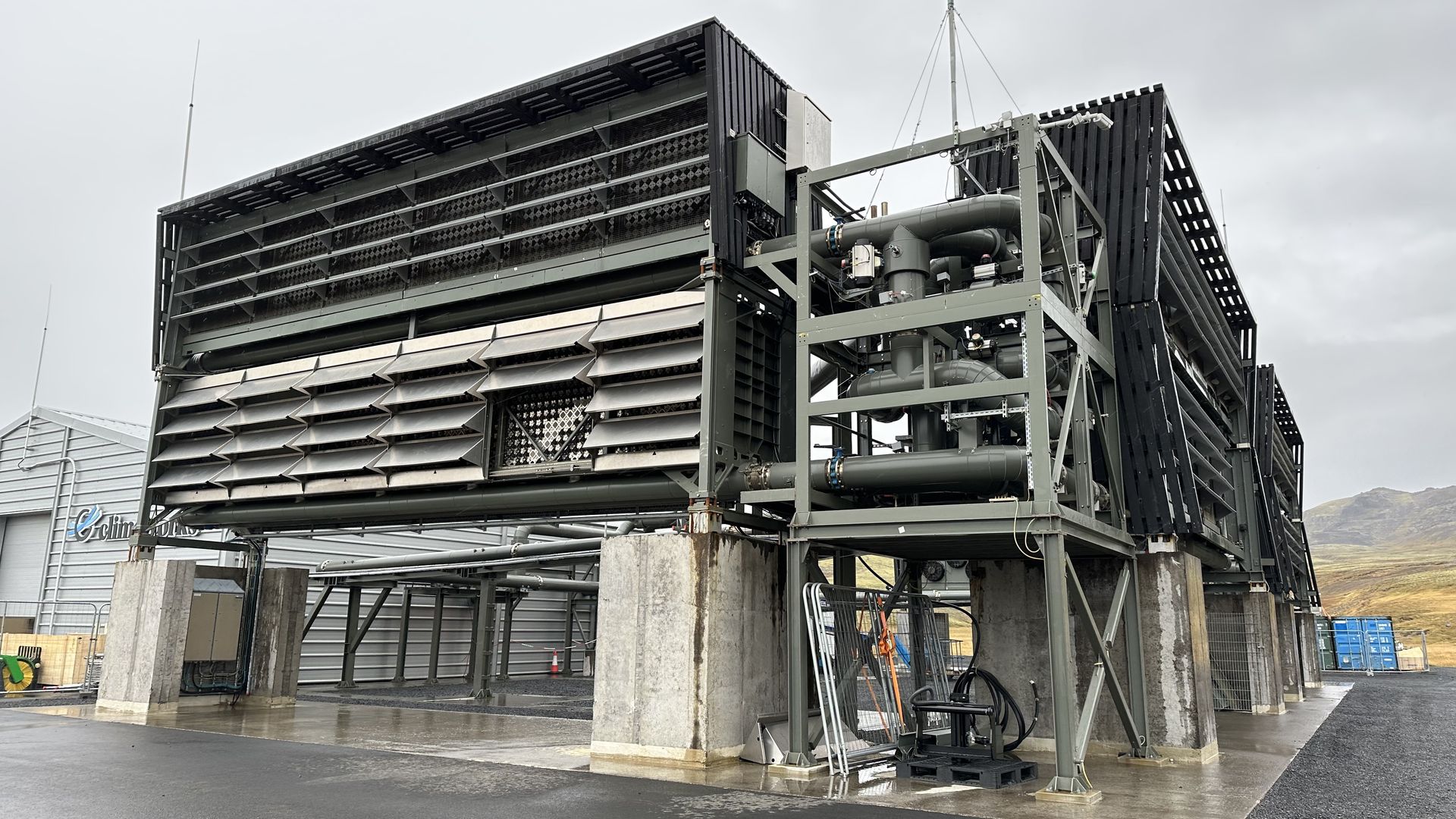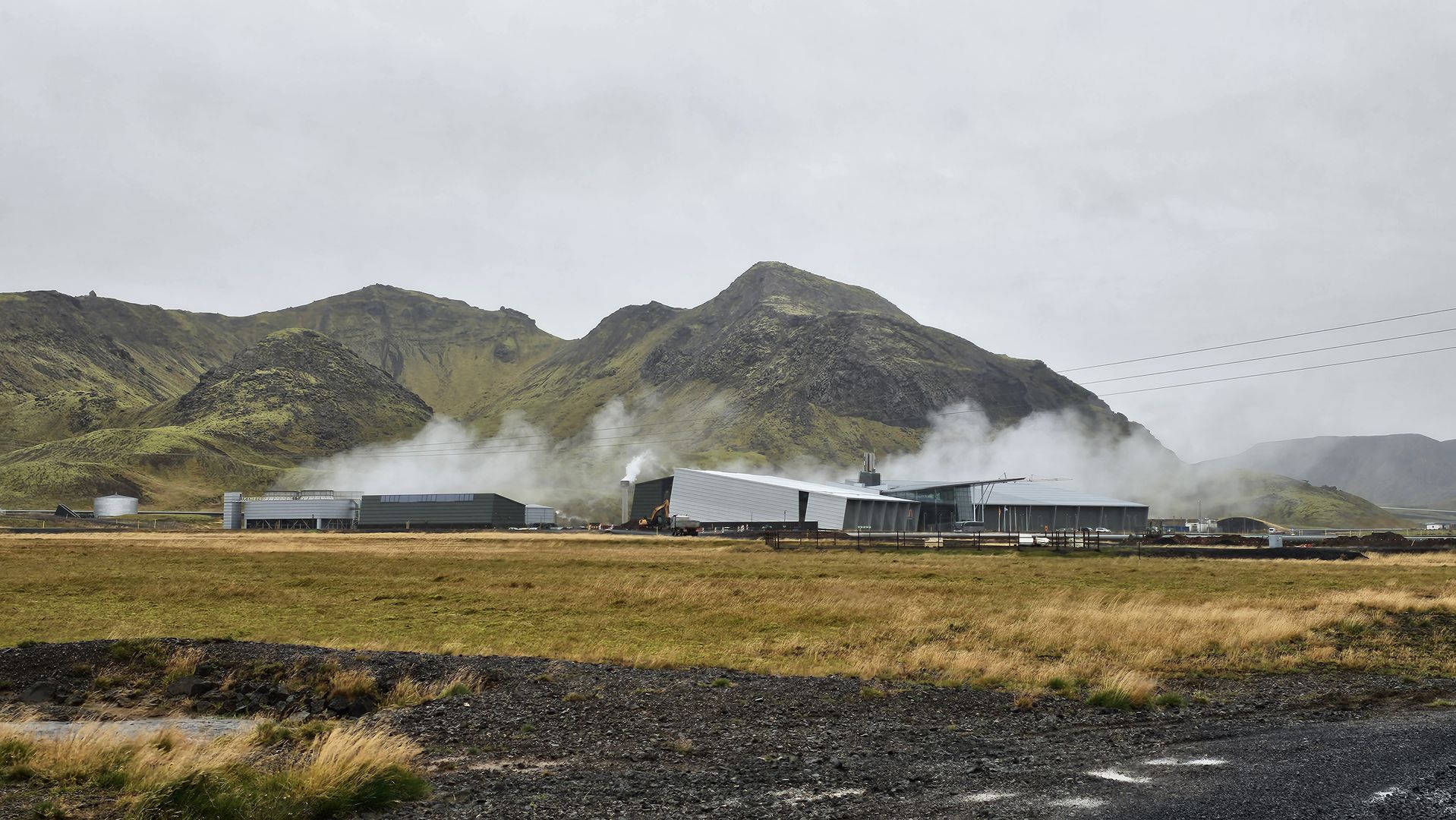
I first became aware of Climeworks as a result of Microsoft's involvement with the firm, and became intrigued by the novel solution the firm has invented to one of humanity's greatest challenges. And now, I've had the opportunity to go and see it for myself.
Announced back in 2020, Microsoft unveiled a 10-year partnership with Climeworks as part of its goal to become carbon-neutral by 2030. Carbon neutrality or "net-zero" also includes the retroactive removal of legacy emissions created by the company, dating back to its founding in the 70s. To achieve net-zero and move towards carbon negativity, Microsoft has adopted a broad array of proactive climate initiatives to reduce their active emissions today, but also contribute to a reduction in greenhouse gases already present in the atmosphere. One part of that overall puzzle is, indeed, direct air capture company Climeworks.
Climeworks is a Swiss company set up by two mechanical engineers in 2009. Dr. Christoph Gebald and Dr. Jan Wurzbacher pooled their knowledge and created the world's first industry-scalable direct air capture facility, based in Iceland. Partnering with Carbfix, Orca essentially sucks carbon dioxide right out of the air, and stores it in underground deposits where it cannot contribute to global warming — and the chaotic climate fluctuations that come with it.
We visited the direct air capture and storage (DAC+S) plant, code-named Orca, to find out more about how Microsoft's investments are being put to use, and what Climeworks' plans are for global scalability.
How does Climeworks do its Climework?

Climeworks is a unique solution to a complex issue and one of many technological solutions being explored across the world. Carbon emissions from human activity is proven to be unnaturally trapping heat within the atmosphere, creating unnatural weather patterns and extreme climatological events across the globe. From record temperatures to melting glaciers, wildfire frequencies, flood events, droughts, and excess deaths and mass migration caused by said events — climate change remains one of humanity's biggest challenges. Solving the climate crisis would require a level of global cooperation that has never really been achievable in human history. Given the state of global geopolitics (to put it lightly), it may be technological breakthroughs instead of cooperation that ultimately keep temperatures in check.
One such technology being explored is direct air capture, led by pioneers like Climeworks. In Iceland, we were given a tour of the Orca plant and an overview of how the system works. From its giant external vacuum-like arrays to its maze of snaking pipes that deposit the harmful gasses underground, transforming them into inert mineralizations.
Climeworks' Bryndís Nielsen explained to us that Climeworks' efforts are not intended to replace global reductions in emissions, but focus on removing historical emissions already present in the atmosphere. Orca's direct air capture and storage (DAC+S) can run 24/7 largely autonomously, save for a small crew with maintenance considerations. The Orca plant was designed as something of a "proof of concept," and is serving as the basis for a vast expansion.

Climeworks' Orca plant is impressive to behold. The footprint of the plant is less than half an acre, making it a thousand times more effective than tree planting — which is often touted as an alternative to reducing emissions. The Orca plant can absorb 4,000 tons of carbon dioxide from the atmosphere every year. Replaced with trees, the same land area would only absorb around 4.7 tons of carbon dioxide per year. Trees also release much of the carbon they store when they die.
Iceland has a unique and dramatic landscape. A relatively young island to the tune of millions of years old, rather than hundreds of millions, Iceland has huge plains of volcanic stone that are quite remarkably bereft of trees. For a fraction of the space, Climeworks' systems use gigantic fans with a modular, stackable design to absorb air, linked up to a filter that collects carbon dioxide. Once full, the system heats up to boiling point, and combines the particles with water, pushing the mixture into the earth's crust. There, the carbon remains trapped and mineralized for anywhere up to 10,000 years.
It's a particularly exciting solution that, even in its infancy, is proving potentially incredibly scalable.
A scaled-up Climeworks, and a scaled-up challenge for Microsoft

Sitting between tectonic plates, the presence of geothermal energy, coupled with Iceland's unique geography and abundance of space, makes DAC+S plants a lucrative investment area for the region.
Companies like Microsoft have decades of carbon emissions they are seeking to account for. Some companies are less concerned than others, but Microsoft seems to be putting its money where its mouth is — despite some criticisms of Microsoft's more recent boost in water and energy usage for its AI push. More on that shortly.
For Climeworks and similar companies, the business model revolves around selling carbon credits, occasionally called carbon offsets. Climeworks charges roughly 1000 euros per ton of carbon stored by its system, and Microsoft is one such customer. A third party verifies Climeworks' operations to ensure the validity of those credits, and Microsoft and other companies can purchase those carbon dioxide tons in advance of the system scaling up. And scaling up is exactly what's next for Climeworks.
Orca serves as the blueprint for Mammoth, Climeworks' next major DAC+S facility, built a few hundred meters away from the original Orca site. Mammoth will remove up to 36,000 tons of carbon dioxide from the atmosphere once fully operational in the coming years.
36,000 tons might sound like a lot, but climate scientists estimate that we need to reduce emissions by billions of tons by 2050 to prevent a spiraling global catastrophe. We've already seen an increase in freak weather effects and heatwaves in places that simply aren't equipped to deal with it, threatening food security and ecological collapse. From the release of carbon in permafrost regions melting, to the destruction of glaciers and ice caps, humanity isn't equipped to deal with such rapid changes in climate conditions. Earth will survive our activity — but we potentially won't be around to see it.
This is why I believe it's important that corporations on Microsoft's scale join governments to curb emissions and invest in technology that can ease the transition to a balanced climate. Microsoft's climate credentials were quite strong up until recently, when it was criticized in reports over how much Azure data centers are using to power AI. Each Bing Chat or ChatGPT query requires server run time to process, of course. With Windows Copilot being baked directly into every Windows 11 PC on earth, and DALLE-3 image generation joining MS Paint, the scale of consumption may exponentially increase as generative AI moves from enthusiast use to general globalized adoption. We reached out to Microsoft to comment on its climate commitments as part of this piece, and here's what the firm had to say.
"AI will be a powerful tool for advancing sustainability solutions, but we need a plentiful clean energy supply globally to power this new technology, which has increased consumption demands. As part of our commitment to create a more sustainable future, Microsoft is investing in research to measure the energy use and carbon impact of AI while working on ways to make large systems more efficient, in both training and application. We will continue to monitor our emissions, accelerate progress while investing in carbon removal strategies, increasing our use of clean energy to power datacenters, purchasing renewable energy and other efforts to meet our sustainability goals of being carbon-negative, water positive, and zero waste by 2030."
Microsoft Spokesperson
For sure, AI has some potential role to play in improving efficiency and modeling climate solutions, but the impact its having on carbon emissions and water consumption is hard to overlook. In Microsoft's 2022 climate report, the firm said that it had reduced its emissions by 0.5%, despite 18% growth. In 2023, Microsoft conceded that emissions had risen by 0.5%. I do wonder if Microsoft will release its figures for the past year in 2024. There is currently no legal requirement for the kind of transparency we've seen from Microsoft, although there is some legislation currently being discussed in the United States to force companies to do so. Either way, it would be interesting to get some raw data for how Microsoft is scaling up its climate responsibility efforts to offset its AI push and partnership with OpenAI.
Microsoft is purchasing carbon offsets from companies like Climeworks to account for its activity, but some of these projects take years to spin up. I joked with Climeworks about them building a sky-scraper-sized DAC-S plant to accommodate offsets. Indeed, Climeworks' website lists ambitions to eventually scale to gigaton levels of absorption.
Despite Climeworks' assertion that its technology cannot replace raw global reductions in emissions, given how little human beings can agree on the solutions to this crisis — I can't help but feel it will be technology rather than abstinence that saves us. Bring on the sky-scraper carbon vacuums.







